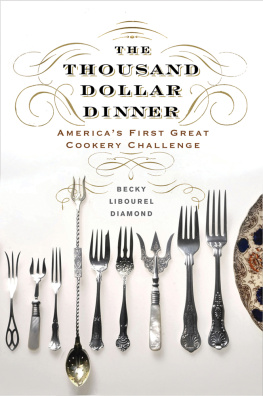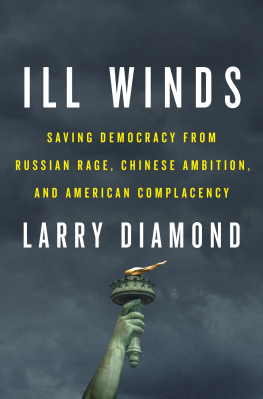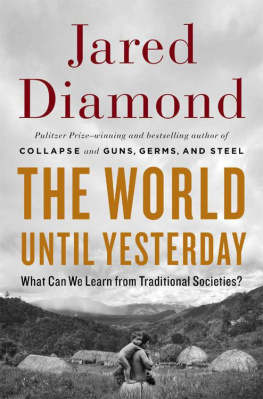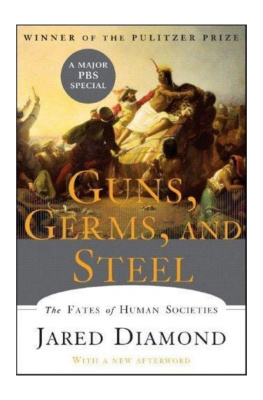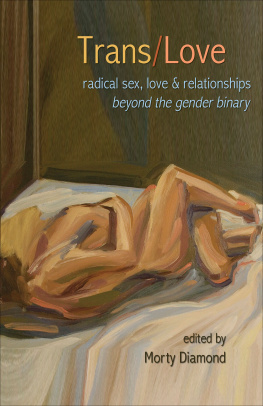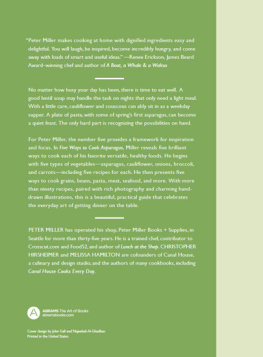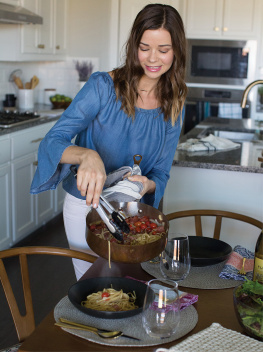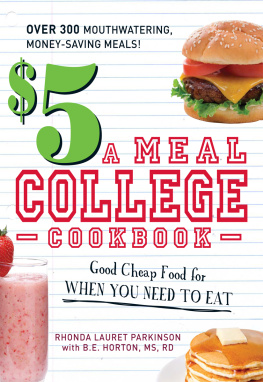All rights reserved under International and Pan-American Copyright Conventions. No part of this book may be reproduced in any form or by any electronic or mechanical means, including information storage and retrieval systems, without permission in writing from the publisher, except by a reviewer who may quote brief passages in a review.
Produced in the United States of America.
Not all our food history is set down in cookbooks.
James Beard, American Cookery
AN INVITATION
A cool spring breeze swept over the Camden and Philadelphia Steamboat ferry as it chugged its way across the Delaware River toward the city of Philadelphia. In the distance, squat steamboats lined the wharfs, intermingled with tall swaying ships, their white sails flapping in the wind. Behind the ships stood rows of worn red brick buildings, housing residences, shops, hotels, and taverns. The steeple of Christ Church, a well-known landmark, loomed above them all, piercing the early evening sky. Just beyond, the American flag flew from the castle-like garret of the ten-story Jayne Building, the nations first skyscraper.
That evening in April 1851, many of the ferry passengers were on the final leg of their journey from New York City. To make the trip to Philadelphia, they had taken a steamboat down the Raritan River to Amboy, and then boarded a train that crossed through New Jersey to Camden. Among those who had made this excursion were fifteen impeccably dressed New York gentlemen. They had accepted an invitation to dine at an exclusive Philadelphia restaurant called Parkinsons.
After the boat docked at the Walnut Street wharf, the men collected their leather travel cases and stepped off the ferry, making their way to the nearby Bloodgoods Hotel, which also served as a waiting area for Camden and Amboy Railroad passengers.
Entering through the heavy glass-paneled door, they stepped into its plush parlor. While several of the recently disembarked passengers were already in line at the hotel desk trying to get a room or hire a hackney coach or cab, the fifteen New Yorkers had been told a driver would be waiting there to meet them. As they scanned the room, a young man walked over and asked them if they were due at Parkinsons. They replied yes, and the young man bowed and pointed to a spot on the street outside where three black carriages were parked.
The drivers helped the men into the carriages, secured their bags, and then set off, the horses feet clip-clopping on the cobblestones. As the carriages reached Eighth Street, they turned south and stopped in front of number 38, a three-story brick building displaying a large sign with PARKINSONS in block lettering. Gleaming white marble steps led up to the restaurants front door, which was surrounded on either side by a storefront made completely out of clear glass, with etched detailing at the top. The second floor featured a small balcony, its three doors open to the mild spring evening, revealing hints of the luxurious dining room inside.
The drivers retrieved the gentlemens bags and carried them to the entryway. The New Yorkers followed, and as they made their way up the stairs, a handsomely dressed waiter came out to meet them. Introducing himself as Parkinsons headwaiter, he ushered them inside, remarking that he hoped their journey to Philadelphia had been a pleasant one. More waitstaff came to take the mens coats and belongings, stowing them in a large closet off the entryway, while the headwaiter led them into one of the restaurants richly furnished front salons. Decorated in deep shades of burgundy, the room featured Wilton carpets, marble-topped tables, and ornately curved mahogany furniture.
Waiting to greet the New Yorkers were their Philadelphia friends. They shook hands warmly and made light conversation. While they were chatting, several waiters approached with aperitifs on silver trayscognac and wine bitters, with Madeira and Unknown to the guests, this was the first taste of a meal they would remember for a lifetime. The men conversed for several minutes, enjoying the invigorating liquors, much appreciated by the New Yorkers after their lengthy trip.
We know for sure only two names of the men at the dinnerR. B. Valentine, a well-known insurance agent from New York, and Joshua Price, a wealthy gentleman from an old Philadelphia Quaker family. However, one source described the fifteen Philadelphians as merchant princes, so we can speculate that the guests would have been among Philadelphias wealthiest at the time, which would have included men such as broker Francis Drexel, dry goods merchant Richard Ashhurst, flour merchant Thomas Ridgway, and physicians J. Rhea Barton and James Rush, both married to heiresses of the Ridgway estate. Other likely guests could have been book publisher Theophilus B. Peterson, Philadelphia Sun editor and publisher Colonel James Wallace, and General George Cadwalader, all of whom were known to have ties to James Parkinson. We can also guess the fifteen New Yorkers were among the wealthiest and most connected in New York City at the time. Some possible guests could have been Henry J. Raymond, cofounder of the New York Times, Samuel Cutler Ward, author and noted epicure who was the husband of Emily Astor, and dry goods merchant Alexander Turney Stewart. All were known to have been frequent Delmonicos customers.
Soon a staff member approached the headwaiter and gave him the signal that the table was ready. The waiter politely waited for a lull in the conversation and then requested that the group follow him upstairs to the large second-floor banquet room. The gentlemen ascended the slightly curved stairway. The polished mahogany railing was intricately carved, and the walls were lined with gold-framed mirrors, still-life paintings, and landscapes. Overhead, a sparkling gas chandelier gave a soft, sustained light.
At the top of the stairs the headwaiter directed them to the left, leading them into the banquet room where they would be dining.Spacious and airy, it was indeed the room the men had seen when they arrivedthe three large doors that led to the balcony were now just partly open, in anticipation of the cool evening air.
Thirty place settings of the finest china, silver, and crystal were situated around the enormous mahogany table, covered with a cloth of freshly starched white linen. A table fork and a fish fork were placed to the left side of each plate, and to the right lay a table knife, a silver fish knife, a soup spoon, and a small fork for oysters. Small individual saltcellars were above each plate on the right side. To the left of each plate a silver stand held the bill of fare, a large booklet beautifully printed in gold and decorative colors. Mounted pieces of ornamental confectionery, statuettes, and striking flower arrangements were artfully displayed down the center of the table. The light of dozens of candelabras mixed with the glow from three gas chandeliers. Tall, exquisitely decorated cakes, meringues, and colorful confectionery were arranged on the massive carved sideboard. The long buffet held rows of wine and liquor bottles, ice buckets of champagne, and pitchers of water.
As the gentlemen took in the opulent scene, the restaurants owner, James W. Parkinson, appeared and greeted them, shaking hands all around. A handsome young man in his early thirties with a head of abundant curly black hair, he was wearing his chefs hat and apron. Although pleasant and cordial, he seemed subdued, almost shy, making the New Yorkers wonder about his expertise in the kitchen.

